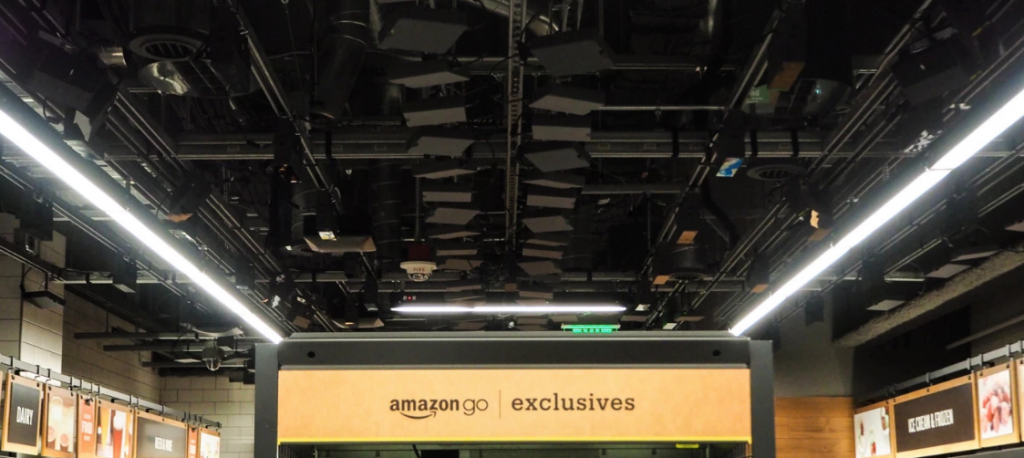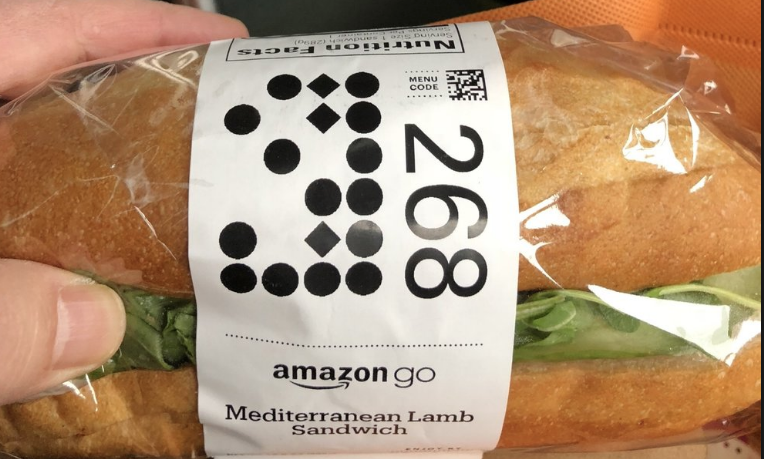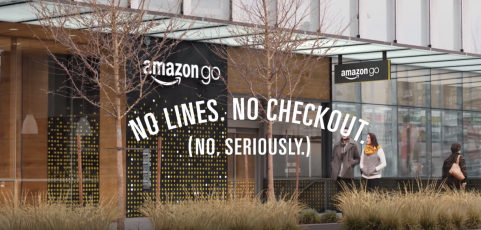Retailers have been looking for a way to streamline the check out process for decades. With the advent of RFID, it was believed that that vision was about to take a big step forward. Shoppers could fill their baskets, swipe a credit card om the way out, and they would be charged instantly and accurately due to this new technology.
Amazon looked at the approach and decided they needed a new way. They approached it the way I imagine Elon Musk of Tesla would have done. Start fresh and think big.
They considered RFID and seem to have abandoned it. To many issues.
- Expensive tags
- Short distance readings
- RFID signal collision
- Handling of liquids and some metals
The in-store experience goes something like this. The shopper enters the store and scans their
The expeience is much like a Penn and Teller act. You walk out wondering how that worked. here are my thoughts.
How It Might Be Done

- Very noticeable in the store design, are overhead cameras. dozens and dozen of them. These would be used to track your movements and pick up product details.
- When you enter the store and identify yourself with a smartphone, face recognition technology can scan your face, and thereafter, know where you are.
- When an item is lifted off of the pressure sensitive shelf, it triggers identity detection, cameras identify you, and the item can be identified.

- It would be difficult to read the barcodes on the item because of positioning, so that may be used only as a confirmation of the item in your hand. The freshly prepared, boxed items do however have a camera readable code that is facing the camera based on its shelf positioning
- so the items can be identified as follows
- Your proximity to it
- Pressure sensitive shelves
- Barcode reading in your hand
- Deep Learning, AI software to understand not only human behavior and motion. Given enough visits, I imagine it could probably identify you by the way you interact with
product and move about the store.
- Placing an item back on the shelf reverses the process. The shelf senses the weight, the system knows the weight of every item you picked up and the code can be read as you walk away. chaos
- When you leave, every item, you picked up, without putting back, is charged it to you.
- It’s that “simple”
So, is it perfect?
It would have to depend on your perspective.
Pros
- The system is remarkably accurate. It seems to be very difficult to fool it. Kudos to Amazon for this. As you can imagine, a grocery store is
chaos , with people blocking cameras, items being misplaced, labels damaged etc. It is so accurate that on the odd occasion that an item is failed to register, Amazon just suggests you keep it. That’s confidence! - No cashiers. That one is obvious. Lower overhead. Also less security, like mystery shoppers.
- The treasure trove of data that Amazon collects about their customers.
- Your account is linked to Amazon, so they already know much about you
- They now know more about your food shopping habits
- They know how you shop, where you were in the store, what labels you read, what you decided not to buy and with Deep Learning algorithms, potentially why you made that decision.
- How long you stay in the store and whether you like to linger.
- How you move around the store, which helps designing new stores layouts. Probably the one advantage for Amazon is one that is less obvious is the data collected on you and how valuable that is.
- From the customer’s perspective, no waits. No lines going out.
- Returns are a snap. Bring it back and use your app to cancel it. Its the honor system. You do it yourself. More labor savings.
- Shrinkage, losses caused by theft, are reduced beyond any retailers wildest hopes. This might otherwise result in a loss of up to 2% of the value of sales.
Cons
So what could possible be wrong with this?
- Amazon controls the number of people in the store. I am guessing that over crowding becomes an issue with the cameras and their ability to identify you and your activity. So rather than wait to pay and leave the store, you may need to wait to get into the store. There are waiting times currently, but as technology improves and the novelty wains, that may be less of a problem.
- Limit to the types of items carried. Milk for example seems to be an issue. Not sure why.
- Although data collected is of great benefit to Amazon, it might be a privacy issues for some shoppers. By linking your activity in the store with your Amazon account, the picture of you really fills in. For exaample, when you shop online, they know what you look like. Is that a problem, not for me. But potentially for some.
Summary
Amazon has clearly achieved something remarkable. They have assembled state of the art machine learning, facial recognition, and camera ID in a unique and successful way. Very few other companies could have done this or would even have tried. My hat is off, I am impressed.
Currently, there are 8 Amazon Stores open, and Amazon projects 3000 operating by 2021. So, is this the state of shopping going future? I for one, hope so.

